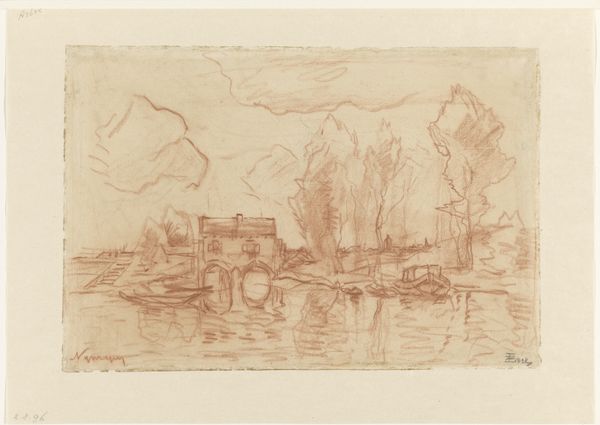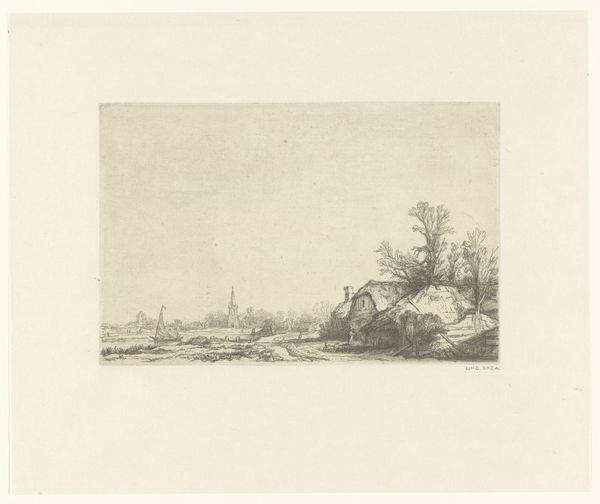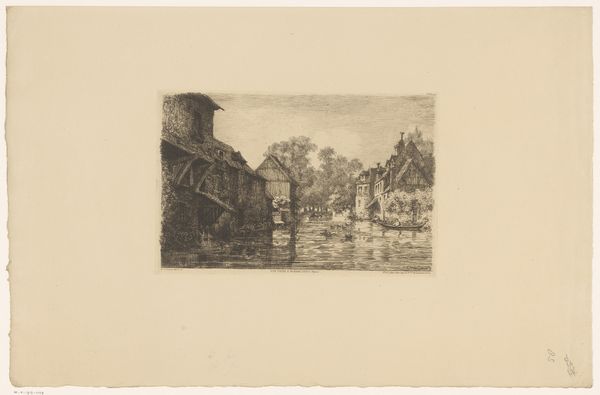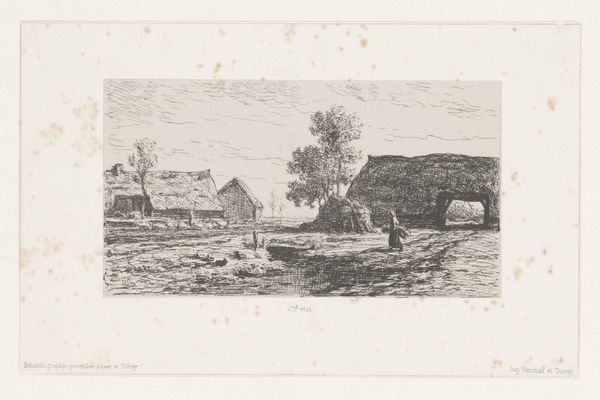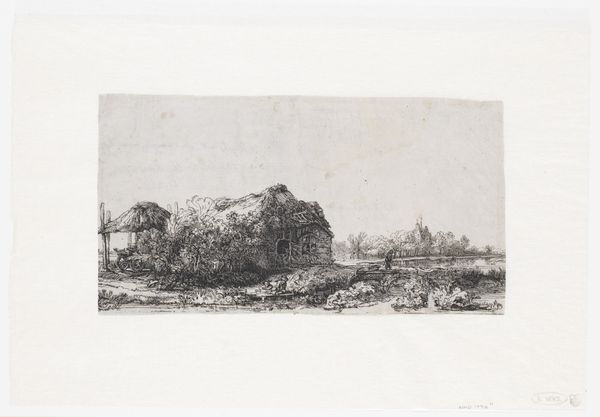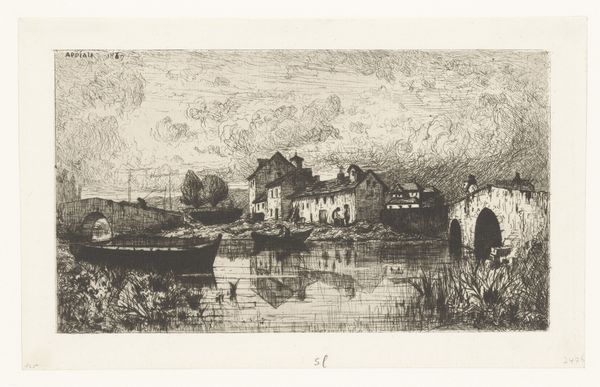
print, etching
#
ink paper printed
# print
#
etching
#
landscape
#
genre-painting
#
realism
Dimensions: height 132 mm, width 208 mm
Copyright: Rijks Museum: Open Domain
Editor: Here we have Willem Roelofs’s “Vrouw in landschap met boerderij en schuur”, which translates to “Woman in a Landscape with Farm and Barn,” an etching from sometime between 1847 and 1875. I am struck by the intricate lines and the overall muted tone, especially the repetition of similar hatched marks creating slightly different areas of texture. What do you see in this piece from a formal perspective? Curator: Indeed, the power of this piece resides in the interplay of line and texture. Note how Roelofs employs dense, almost frantic hatching in the foreground, especially to describe the rough, uneven terrain, which creates a sense of depth. The varying densities and directional changes in the etched lines work to create areas of visual weight and guide the eye towards the more open spaces, wouldn't you agree? Editor: Absolutely, there is a distinct rhythm to the composition. I appreciate how the varying pressures applied during the etching process give the composition some character. Would you say that this subtle variation contributes to the work’s overall aesthetic appeal? Curator: Precisely. The varying pressures in the etching process contribute to the articulation of form and space; consider the way the light subtly falls upon the various textural plains. Did you note how Roelofs uses line weight in creating tonal gradations? Editor: I hadn't focused on the tonal gradations until you pointed it out! So, Roelofs balances this overall field through subtle tonal adjustments. I appreciate the balance inherent in the piece—it presents a comprehensive landscape while providing pockets of focused complexity. Curator: Exactly. It’s through this combination of broad visual strokes and localized textures that the artist compels the viewer into active engagement with this relatively simple landscape. I will keep this effect in mind. Thanks.
Comments
No comments
Be the first to comment and join the conversation on the ultimate creative platform.

